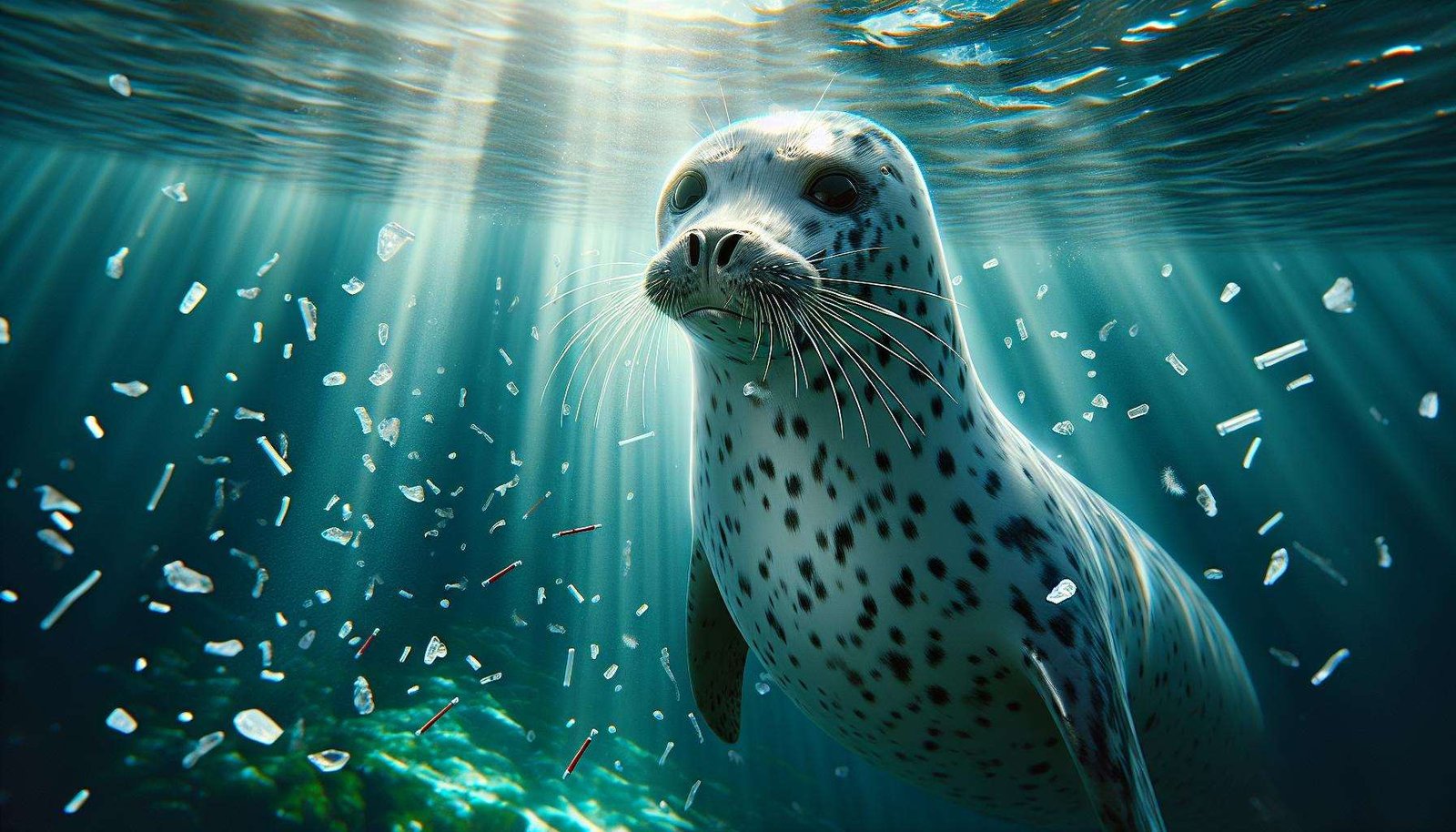
There are some places in the world so remote that you would be forgiven for thinking they would be immune from human activities. Not so.
The pristine waters of Alaska, often considered one of Earth’s final frontiers, are now facing a threat that is neither visible nor immediately noticeable to the naked eye: microplastics. These tiny plastic particles, measuring less than five millimeters in size, have infiltrated the diets of spotted seals in the remote regions of Alaska. This alarming discovery has raised concerns among scientists and environmentalists, prompting a deeper examination of the impacts of microplastic pollution on marine ecosystems.
At the end of the day plastic pollution and the huge amounts of single use products are adding up 24/7/365 at an accelerating pace.
Understanding Microplastics
Microplastics are small plastic fragments that originate from larger plastic debris breaking down in the ocean over time. They can also come from tiny plastic beads found in personal care products like facial scrubs or result from synthetic fibers shed from clothes during washing. Oh and chewing gum too. Due to their size, microplastics are easily ingested by aquatic life, starting from tiny plankton to larger marine animals like the spotted seals.
The Path to the Seals
The path microplastics take to end up in marine mammals is an intricate journey. Marine creatures, beginning with the smallest organisms such as plankton, consume these particles. As smaller organisms are eaten by larger ones, the microplastics travel up the food chain, eventually reaching apex predators, like the spotted seal. These materials can accumulate in the digestive systems of marine mammals, potentially causing harm over time.
Scientific Insights on Seal Diets
Recent studies have highlighted that microplastics are becoming an integral, albeit unwanted, part of the marine food web. Researchers have analyzed the stomach contents of spotted seals and found significant amounts of microplastics, indicating widespread environmental contamination. According to Wikipedia, microplastics can have detrimental effects on the health and reproduction of marine animals and let’s face it that it would be surprising if these chemicals which are entering our bodies and passing the blood brain barrier and even into testes is not toxic to our and other animals wellbeing.
The Broader Environmental Impact
Microplastic pollution not only threatens marine life but also poses risks to human health and the global environment. These particles can adsorb toxic chemicals from the ocean, which can then be transferred to marine organisms that ingest them. As humans consume seafood, there is potential for these toxic substances to enter the human body, leading to health problems (read this relevant article on microplastic contamination).
Addressing the Challenge
Devising effective methods to tackle microplastic pollution is complex, given the sheer volume of plastic waste entering the oceans globally. Innovative solutions are on the rise. Some scientists are working on developing biodegradable plastics that would break down naturally without leaving harmful residues. Others employ new filtration technologies to catch microplastics before wastewater reaches the ocean (information available on the development of biodegradable plastics).
Policy and Social Considerations
Addressing the microplastic crisis requires concerted efforts on both political and social fronts. Governments around the world are considering bans on single-use plastics and implementing stricter regulations on plastic production and disposal. Public awareness campaigns are crucial in reducing plastic use and promoting recycling and proper waste management. These actions aim to curb further pollution and protect vulnerable ecosystems like those in Alaska.
Technological Innovations and Future Directions
On a more optimistic note, technology is paving the way for innovative solutions to combat microplastic pollution. Researchers have designed advanced filtration systems that can extract these particles from water sources. Furthermore, scientists are exploring the use of bacteria that can digest plastics, offering a potential solution for breaking down existing pollution in the ocean. Interested readers can explore more on the advances in biodegradation technologies.
The Role of Individuals
Each individual has the power to make a difference in the fight against microplastic pollution. Simple actions, such as reducing the use of plastic products, opting for reusable items, and supporting policies aimed at environmental protection, collectively contribute to mitigating the impacts of pollution. As the issue of microplastics continues to gain global attention, it is more critical than ever for individuals and communities to act.
Conclusion
The contamination of spotted seal diets with microplastics in remote Alaska waters signals a broader environmental issue that demands urgent attention. While the task ahead is daunting, the combination of scientific innovation, political action, and individual responsibility offers a path forward. By understanding and addressing the complexities of microplastics, we can work towards preserving the health of our oceans and the diverse species that call them home.
For further reading on this topic, please visit the current article on microplastic contamination.
The post Microplastics in Spotted Seal Diets: A Growing Threat in Remote Alaska Waters appeared first on Green.org.














